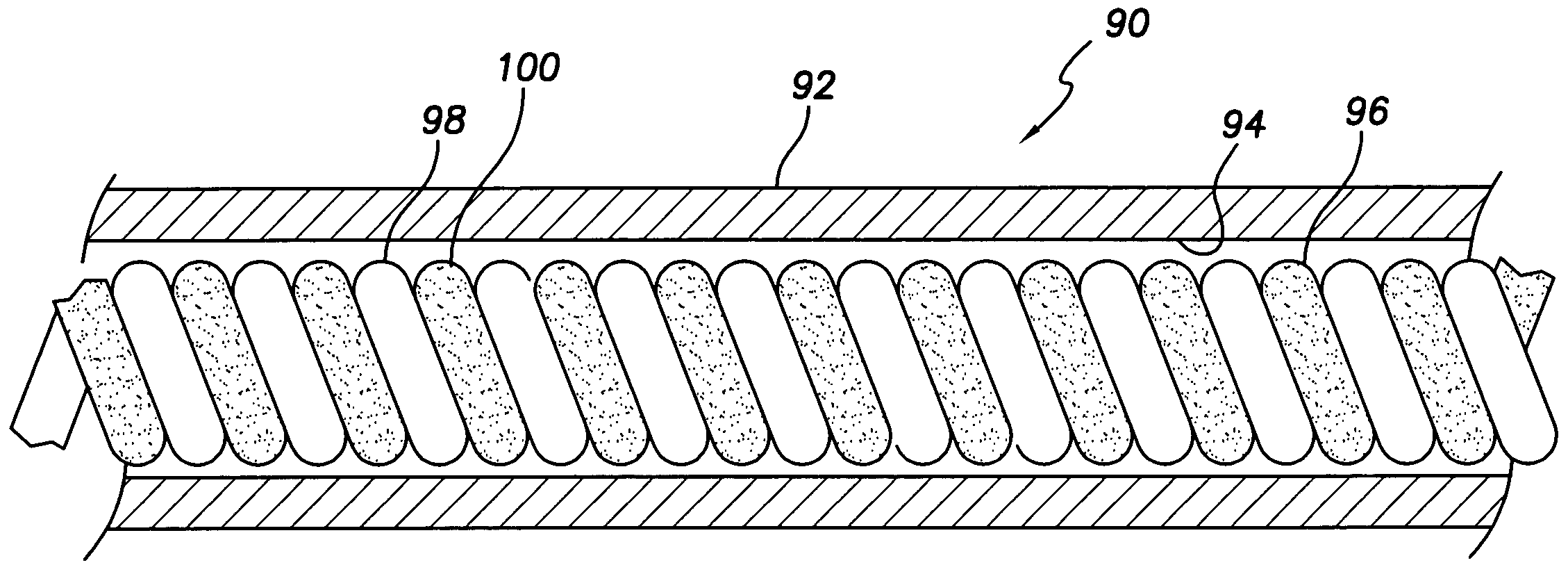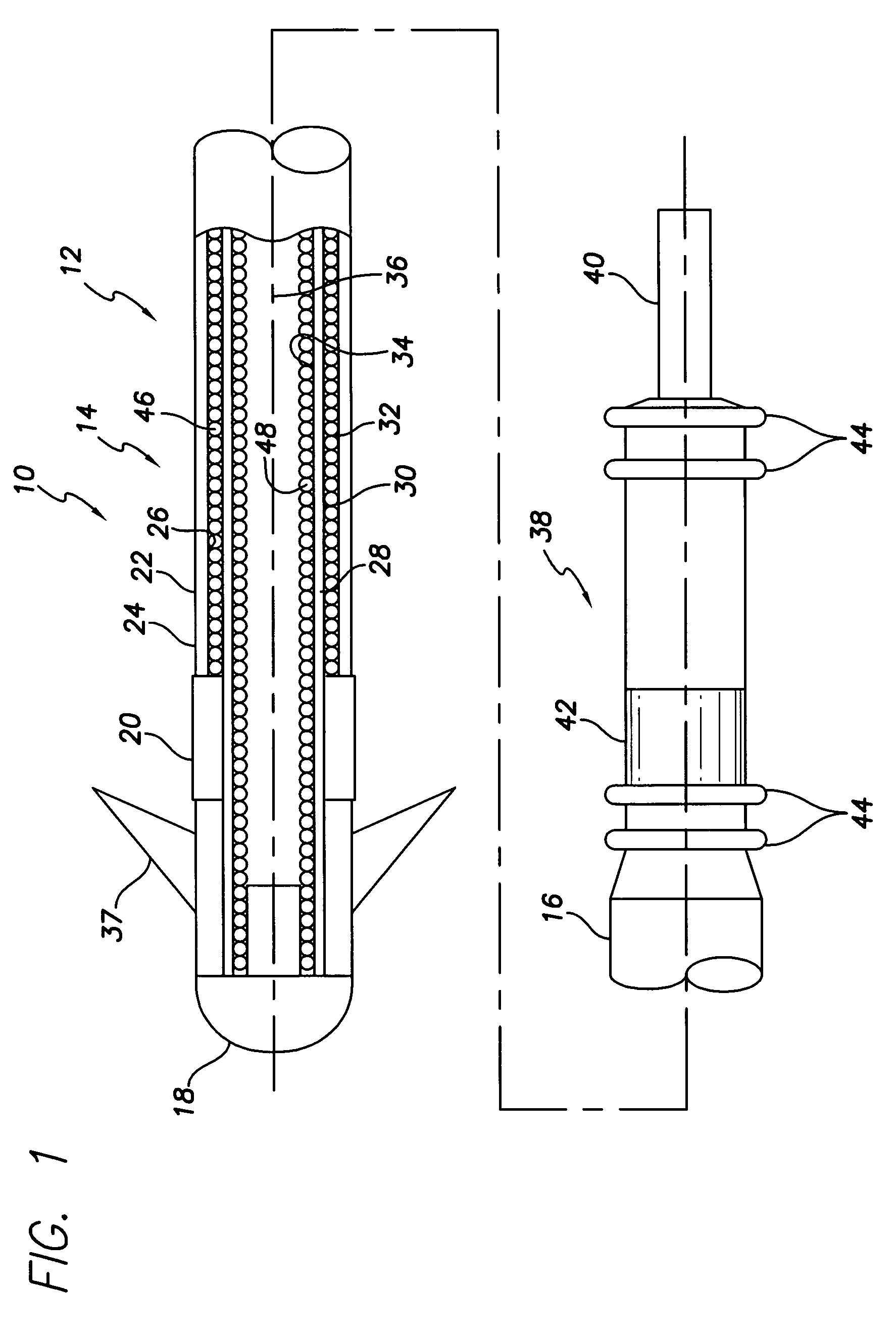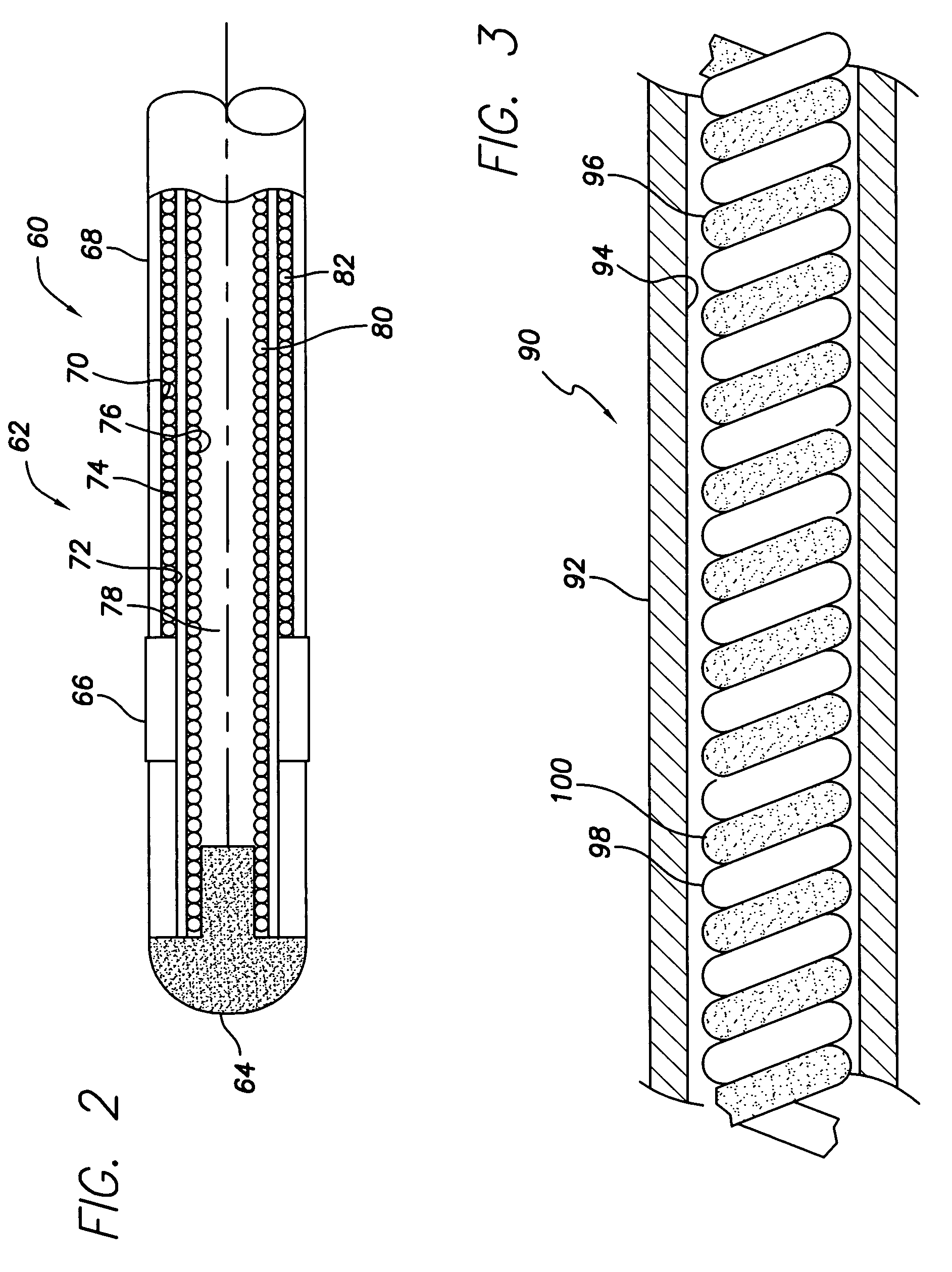Implantable medical leads and devices having carbon nanotube-based anti-electrostatic coatings and methods for making such leads and devices
a technology of anti-electrostatic coating and medical leads, which is applied in the field of implantable medical leads, can solve the problems of friction-induced triboelectric charge, high voltage generation of these insulating sources, and high electrostatic charge, and achieve good dispersion of carbon nanotubes
- Summary
- Abstract
- Description
- Claims
- Application Information
AI Technical Summary
Benefits of technology
Problems solved by technology
Method used
Image
Examples
Embodiment Construction
[0022]The following description is of a best mode presently contemplated for practicing the invention. This description is not to be taken in a limiting sense but is made merely for the purpose of describing the general principles of the invention whose scope is defined by the appended claims. Although the invention will be described in the context of implantable cardiac stimulation and sensing leads, it will be evident to those skilled in the art that the invention described herein has broader utility, being applicable to a wide variety of implantable medical leads for stimulating selected body tissue and sensing the electrical activity of such tissue.
[0023]FIG. 1 shows in simplified, schematic form an endocardial, passive-fixation, body implantable lead 10 in accordance with a first embodiment of the invention. The lead 10 includes a lead body 12 having a distal end portion 14 and a proximal end 16. The distal end portion 14 includes a tip electrode 18 and a ring electrode 20 posi...
PUM
| Property | Measurement | Unit |
|---|---|---|
| Fraction | aaaaa | aaaaa |
| Fraction | aaaaa | aaaaa |
| Luminous flux | aaaaa | aaaaa |
Abstract
Description
Claims
Application Information
 Login to View More
Login to View More - R&D
- Intellectual Property
- Life Sciences
- Materials
- Tech Scout
- Unparalleled Data Quality
- Higher Quality Content
- 60% Fewer Hallucinations
Browse by: Latest US Patents, China's latest patents, Technical Efficacy Thesaurus, Application Domain, Technology Topic, Popular Technical Reports.
© 2025 PatSnap. All rights reserved.Legal|Privacy policy|Modern Slavery Act Transparency Statement|Sitemap|About US| Contact US: help@patsnap.com



